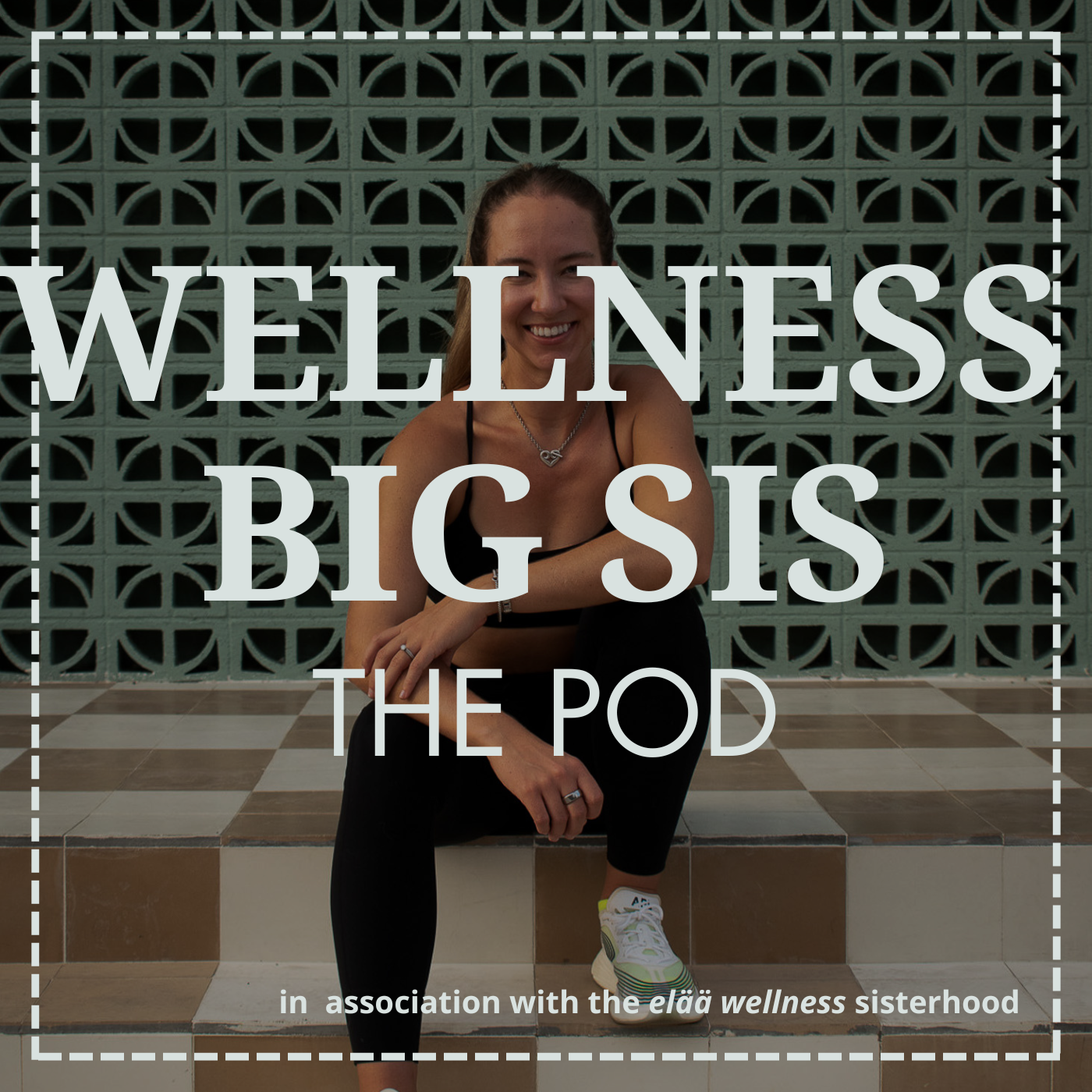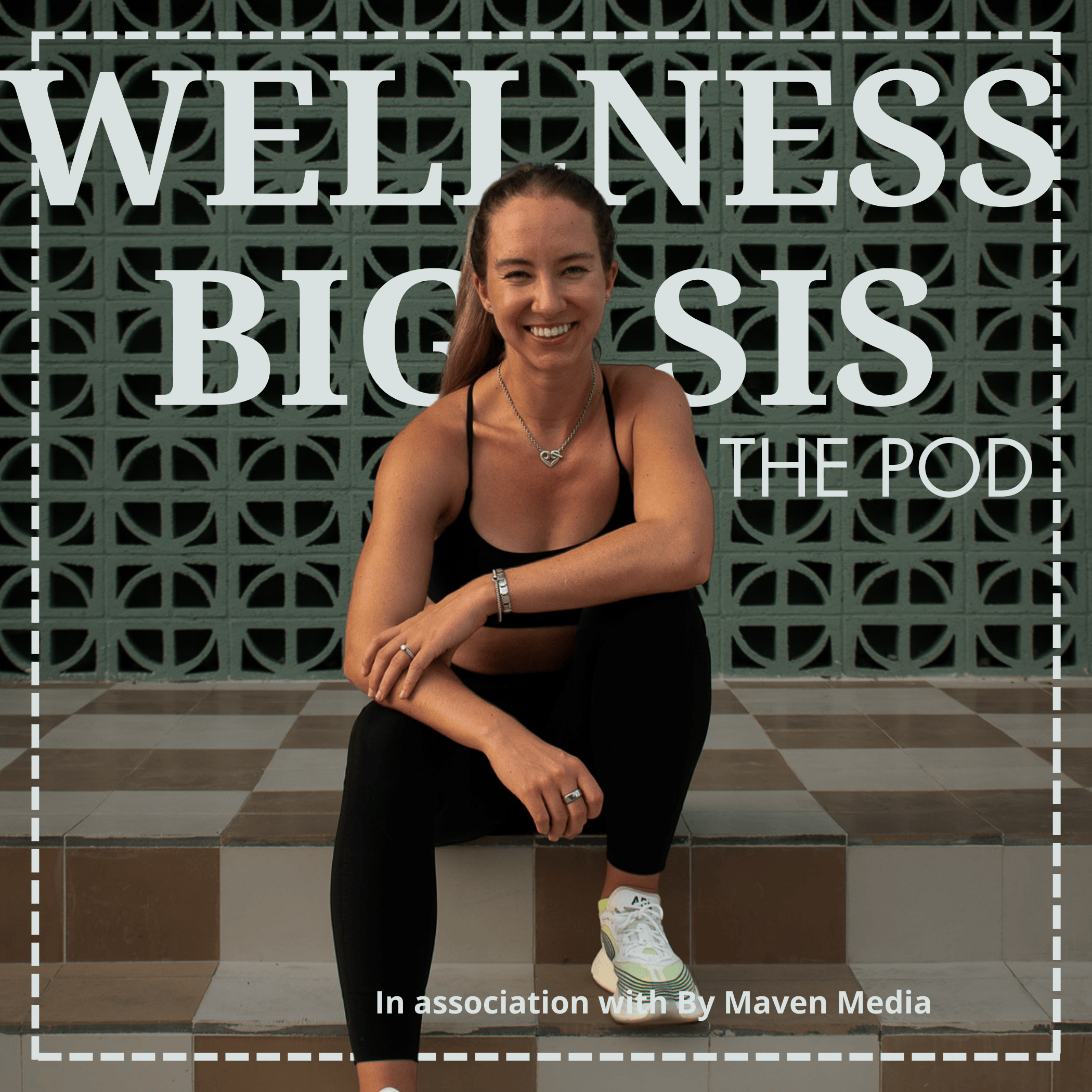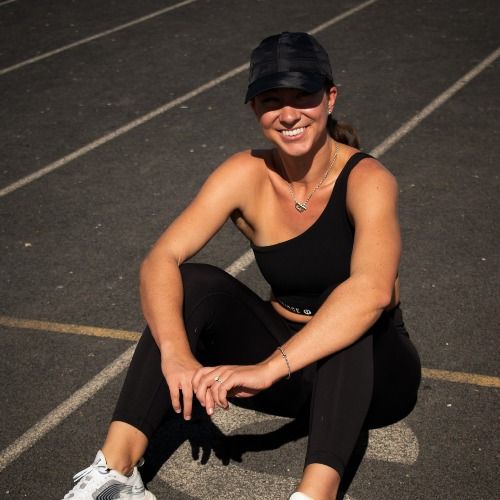hotter & smarter in 5:: rep range cheat sheet for muscular and cardiovascular health
Join us as we get hotter & smarter learning about how to exercise in the best way for our bodies! We chat specific rep ranges for our muscles & heart health!
loving the pod? click the follow button, & we'd love if you could leave a review!
insta:: @dr.kelsyvickdpt & @elaa_wellness & @wellnessbigsispod
youtube:: @dr.kelsyvickdpt
tiktok:: @dr.kelsyvickdpt
sign up for the free wellness big sis newsletter!
sign up for our patreon for exclusive content & workouts!
00:00 - 01:03 Introduction to the Ultimate Fitness Cheat Sheet
01:04 - 01:13 Understanding Muscular Fitness
01:14 - 01:27 Training for Muscular Strength
01:28 - 01:54 Building Muscular Endurance
01:55 - 02:08 Enhancing Muscular Power
02:09 - 02:17 Achieving Muscular Hypertrophy
02:18 - 02:54 Cardiovascular Training Systems
02:55 - 03:13 Anaerobic Training: ATP-PC System
03:14 - 03:39 Anaerobic Training: Glycolytic System
Transcript
this is going to be your ultimate cheat sheet for how
2
:to improve all aspects of your
muscular and cardiovascular fitness.
3
:So let's get hotter and smarter in five
as we come up with the ultimate toolkit.
4
:Ultimate guidelines for how to
improve your muscular strength, power
5
:hypertrophy, and endurance, and then
also your cardiovascular fitness.
6
:So there's a few things when it comes
to exercise that we want to improve, and
7
:a lot of the time I get the question,
what exercise is right for my body?
8
:And that completely depends.
9
:But we definitely wanna target these
next few systems and there's a lot of
10
:different ways that we can apply these
rep ranges and this guidebook to the
11
:different systems within our body.
12
:So we're gonna go over those guidelines
today and create, , like a cheat sheet
13
:for your muscular health and then
also for your cardiovascular health.
14
:So from a muscular perspective,
there's four things that
15
:we wanna be able to train.
16
:Muscular strength, muscular
endurance, muscular hypertrophy,
17
:and then also muscular power.
18
:So muscular strength is the ability to
exert maximal force for one repetition.
19
:And the rep ranges for this are
eight to 12 reps, one to three sets.
20
:With one to two minutes of
rest for muscular endurance.
21
:That's our ability to repeatedly
lift a weight below our
22
:maximal effort multiple times.
23
:So I'm thinking of a silly example based
on a recent conversation, but if you
24
:were having to put everyone's carry on in
the overhead bin on a plane, that would
25
:be an example of muscular endurance.
26
:So in general, to train
muscular endurance, it's 10
27
:to 25 reps, two to four sets.
28
:With 30 seconds to one
minute rest in between.
29
:Muscular power is our ability
to exert maximal effort quickly.
30
:So there's now a time component to this.
31
:In general, we train this with three
to six repetitions, one to three
32
:sets with one to two minutes of rest.
33
:And lastly, muscular hypertrophy.
34
:So this is the actual increase in
the size of the muscle and that.
35
:Cheat sheet is eight to 12 reps,
three to six sets with one to
36
:two minutes rest in between.
37
:For our cardiovascular training, there are
three systems that we wanna train and a
38
:lot of them have to do with whether or not
we use oxygen for power or whether or not
39
:we don't use oxygen to supply our muscles.
40
:So the first two systems are anaerobics.
41
:They do not use oxygen in order to power
the motion or power the run, or power the
42
:swim or whatever task that you're doing.
43
:And then the third system is
the aerobic system, and that's
44
:the one that utilizes oxygen.
45
:So the first two systems are
all about quick bouts because we
46
:are not having to utilize oxygen
in order to power the movement.
47
:So first off, we have the A TP PC system.
48
:A typical training session for
this might look like a warmup
49
:with a five to 15 second sprint.
50
:Super duper quick two to five minute
recovery though, so we can utilize
51
:these resources really quickly, but it
takes them a longer time to recover.
52
:For the anaerobic glycolytic
system, this is the second anaerobic
53
:system that does not use oxygen.
54
:A typical workout might
look like a warmup.
55
:30 ish, second to two minute efforts with
a one to two minute recovery in between.
56
:And I'm picturing a run, but this can
be a swim, it can be a cycle, it can
57
:be a row, it can be a lot of different
things, which is why I'm giving these
58
:like very vague general guidelines based
on time sets and then also recovery.
59
:And lastly, we have the aerobic system.
60
:So a typical workout for this might be
a warmup, two to four minute effort.
61
:So longer efforts with a
one to two minute recovery.
62
:So this is typically
done in a one-to-one or.
63
:Two to one ratio.
64
:So a either an equal working
set to an equal resting set.
65
:So a two minute working set to a
two minute recovery, or a two minute
66
:working to a one minute recovery.
67
:So a lot of the times these
are harder workouts for me.
68
:I love the sprints.
69
:The A-T-P-P-C system, five
to 15 second bouts of effort.
70
:So that's you sprinting for 15 seconds,
recovering for two to five minutes.
71
:That's how you're training that system.
72
:The anaerobic glycolytic system,
30s work to two minute work.
73
:So again, a relatively short working
set with a one to two minute recovery,
74
:this aerobic one, a little bit longer
working sets, and usually a typical
75
:shorter recovery compared to what
other systems we had been training
76
:when it comes to cardiovascular health.
77
:So save this.
78
:I used this all throughout college to
trial and experiment different things with
79
:my workouts to see how my body responded.
80
:And, we need all of these, but
a lot of the time people ask me
81
:how many sets, how many reps?
82
:And it really truly depends on what
system you're trying to target.
83
:But as long as you're sprinkling in a
little bit of all of these, throughout
84
:your training, you are going to be doing
what we consider the right exercise.
85
:So now we're all a little hotter
and smarter now that we have a cheat
86
:book for how to actually maximize our
training and find the exercise routine
87
:that works the right way for our body,
while also challenging the systems we
88
:want in order to improve our muscular
health and our cardiovascular health.


